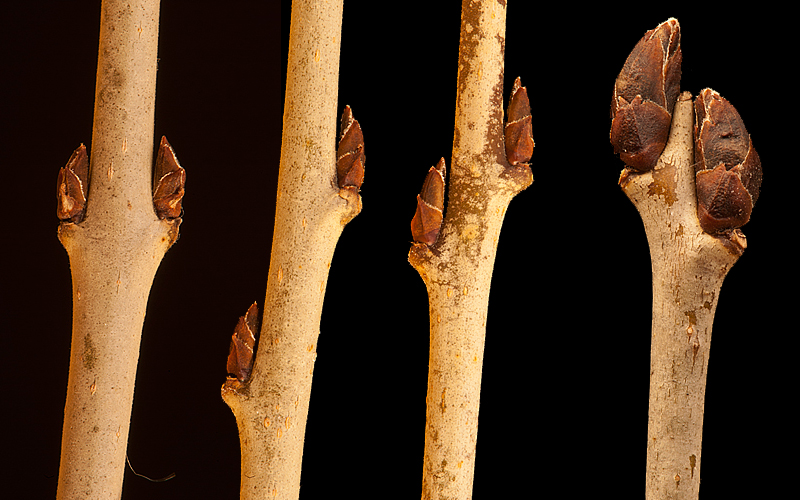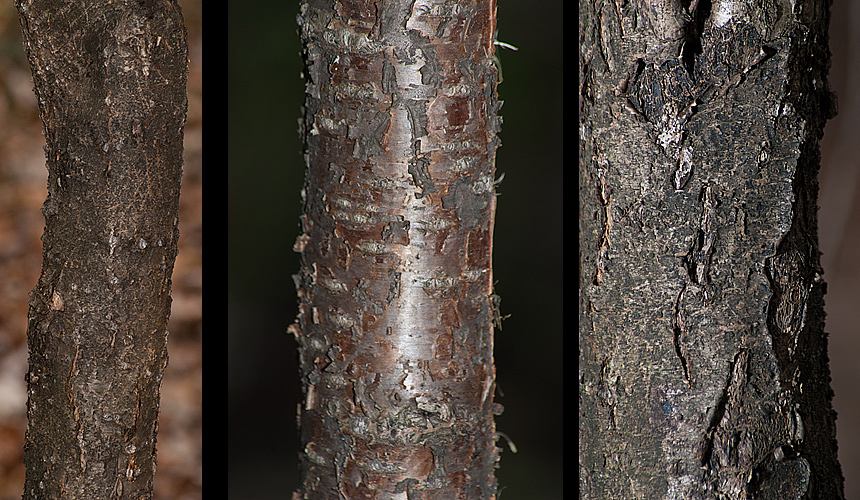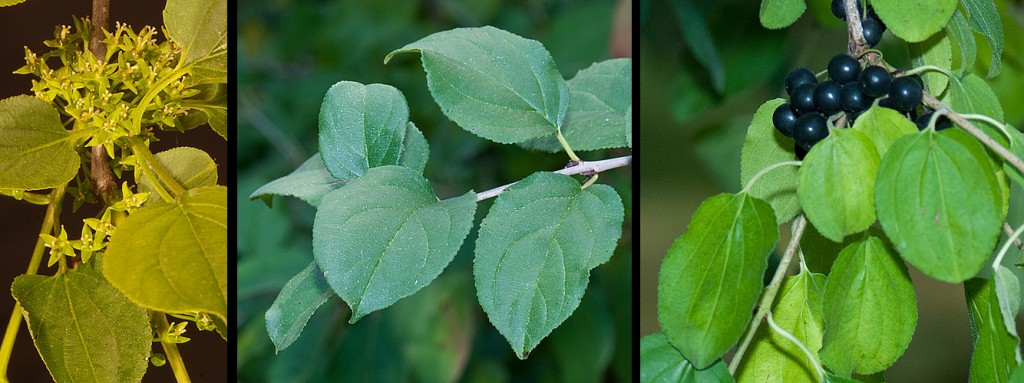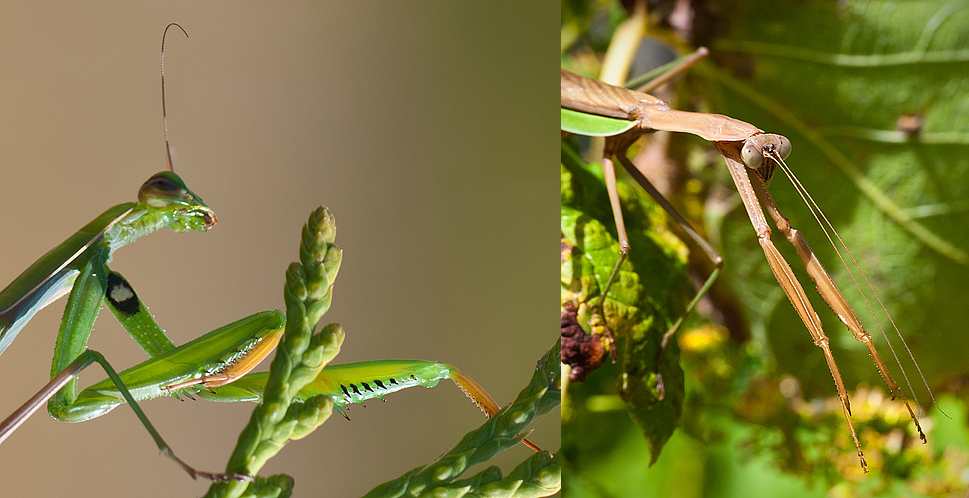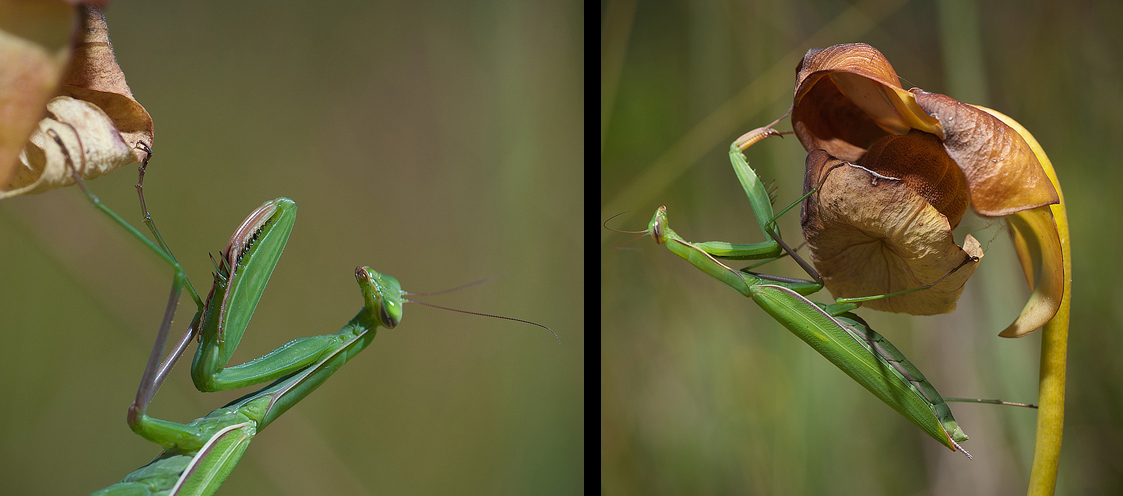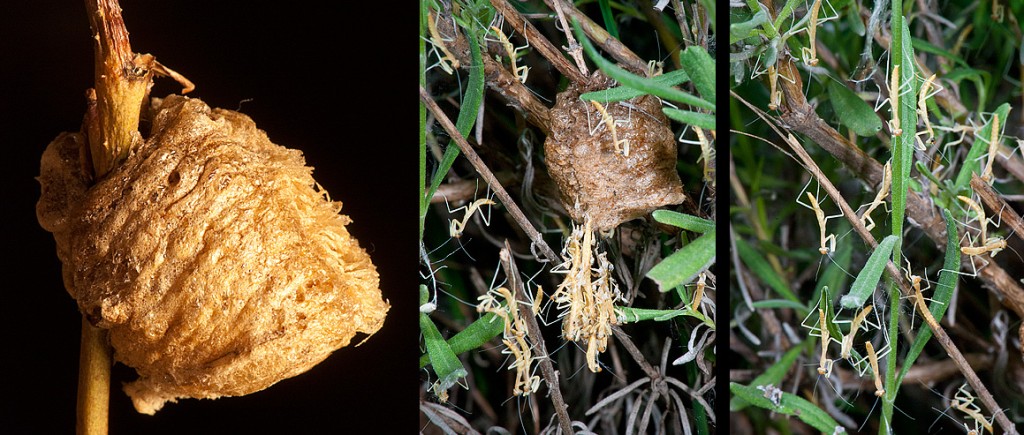Common Buckthorn, also called European Buckthorn, (Rhamnus cathartica) was first collected in Michigan in 1914 but reported by Beal in the 1904 Michigan Flora. Billington in his Shrubs of Michigan, published in 1949, still recommends this species as “an excellent hedge plant;” although, he does admit that the “seeds do germinate easily” and they “create a green carpet under the bushes.” This invasive species should never be planted.
An aggressive invader of many habitats in Michigan, this shade tolerant shrub is choking out many native species. While distributed throughout the state, it is common only in southern Michigan, but seems to be spreading in northern Michigan.
It is one of the the first species to leaf out and one of the last to drop its leaves, resulting in a long growing season and giving it an advantage over our native species. The plants are allelopathic, meaning they inhibit the germination of other species. Their fruit is largely responsible for this characteristic so once the species becomes established it aggressively colonizes the habitat. I have seen colonies of Common Buckthorn that have one large “mother-tree” in its center. The seeds are also epigeal, meaning that they germinate on the ground without having to be buried. This allows large numbers of them to germinate.
The twigs are tipped with a thorn slightly longer than the buds. The buds, and hence the leaves, are sub-opposite but opposite and alternate nodes occur. The nodes shown in the photo are three successive nodes on the same twig. The thorns occur along the branches and are sharp. These distinguish the plant from Wild Black Cherry, and Choke Cherry.
The bark resembles the bark on a Wild Black Cherry but Buckthorn Bark is often redder. Choke Cherry bark is also similar but the lenticels (the large pores) are more prominent in the cherry. If you have doubts, then peel a little of the bark away from a branch and look for the orange inner bark. Most Common Buckthorns have this bark.
The leaves are slightly folded, with fine teeth and 3-5 pairs of prominent recessed veins. They are normally a dark green.
The flowers have four yellow-green petals. Male and female flowers occur on different trees and the female trees outnumber the males. A few male trees in a given population can produce enough pollen to pollinate a large colony. I checked 60 shrubs in one colony looking for male flowers to photograph and could not find any. This same colony heavily fruited that year indicating there was no shortage of pollen.
The fruit is a three to four seeded drupe that is eaten by birds. A drupe is a fleshy fruit that surrounds a hard pit or pits. Cherries are an example. Most Common Buckthorns fruit heavily, so once a few plants begin to colonize an area it can rapidly take over. The seeds remain in the seed bank for a relatively short period (three to five years). After we cut a large stand in Royal Oak, Michigan, seedlings continued to appear for the next three years.
Michigan Natural Features Inventory has an excellent site on Common Buckthorn.
Copyright 2013 by Donald Drife
Webpage Michigan Nature Guy
Follow MichiganNatureGuy on Facebook


